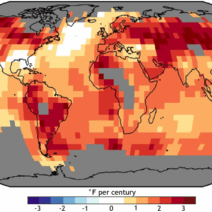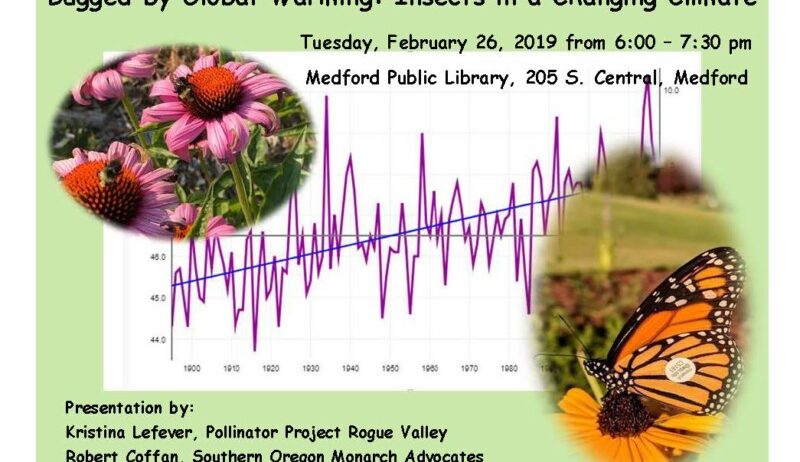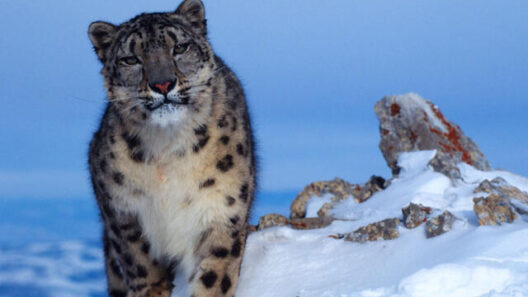Could global warming make insects grow larger? This question invites us to explore a fascinating intersection of climate science and entomology. As our planet’s temperatures rise, the implications for ecosystems are profound and multifaceted, particularly concerning the vast and diverse world of insects. Although the initial reaction may be skepticism, the potential for size variation among insect populations due to climatic shifts merits closer examination.
Insects, by their very nature, are ectothermic creatures, meaning their body temperature is influenced directly by their surrounding environment. With the ongoing trends of global warming leading to increased temperatures, we may witness changes in the physiological and behavioral aspects of various insect species. As temperatures rise, it’s plausible to ponder if these shifts could trigger growth spurts within certain insect populations. More warmth, in theory, could accelerate metabolic rates, promote rapid development, and support larger body sizes. But will that indeed be the case?
To understand this potential phenomenon, we must consider the environmental conditions conducive to insect growth. For many species, warmer temperatures can enhance reproductive rates, leading to increased population densities. As insects reproduce more rapidly in warmer conditions, one might assume that larger sizes could then arise from natural selection favoring those individuals that can better exploit the available resources. However, this scenario presents a significant challenge: not all insects respond uniformly to rising temperatures.
One notable example is the Goliath Beetle, one of the largest insects on Earth. In a temperature-stressed environment, rapid growth may initially seem advantageous. However, increased temperatures can also lead to desiccation — a condition where insects lose moisture more rapidly than they can replenish it. This desiccation stress could counteract the benefits of accelerated growth rates, resulting in smaller, weaker populations over time. Thus, while some insects may grow larger, others might struggle to survive at all.
Furthermore, the potential impact of climate change extends beyond mere size. It can shift the delicate balance of ecosystems. Predators and prey often have intricate relationships, and fluctuations in size can disrupt these dynamics. For instance, if herbivorous insects grow larger, their increased consumption could lead to more significant ecological pressure on plant communities. Conversely, if predatory insects increase in size and efficiency, they could diminish the populations of their prey, creating cascading effects throughout the food web.
Regardless of the size of these insect groups, the general adaptation strategies must also be considered. While some species might benefit from larger body sizes — potentially leading to favorable traits such as increased reproductive success — others may develop strategies that favor smaller sizes for survival. For many insects, size is a double-edged sword. Larger bodies can mean greater energy demands. Therefore, if resources are scarce due to environmental changes, smaller insects may be more viable in the long run.
Moreover, climate change doesn’t work in isolation. The interactions between rising temperatures, humidity change, and altered precipitation patterns add layers of complexity. Insects rely on a fine balance of environmental conditions; fluctuations can cause adverse effects on their growth and survival rates. Thus, predicting the outcome of climate change impacts on insect sizes requires meticulous consideration of these compounding factors.
Human activities add an additional layer of complication. Urbanization, deforestation, and agricultural practices change local climates in ways that affect insect populations. Pesticide use can also skew natural selection, favoring certain traits over others. The resultant variability can cause unpredictable shifts in insect size. Large-scale ecological systems are subject to bombardment from human-induced changes, and the impact on insects — whether by promoting larger sizes or shrinking populations — may not be straightforward.
The irony exists that climate change could be both a boon and a bane for insects. In some cases, increased temperatures could inadvertently enhance habitats for certain species, allowing them to thrive and grow larger. In contrast, other species may falter, their environments becoming inhospitable or overly hostile. To comprehend the intricacies involving temperature and growth, further research is required. The question isn’t merely whether insects can grow larger due to global warming, but also what the combined ecological implications of those changes might be.
The interplay between insects and climate is a microcosm of broader environmental changes that affect all life forms on Earth. By examining this intricate relationship, we can learn more about resilience and vulnerability in our ecosystems. As we postulate about the possible outcomes of larger insects in a warming world, it is crucial to acknowledge the ecological frameworks they inhabit. The question, then, becomes less about size alone and more focused on the evolving dynamics of species survival amidst rapid climate change.
In conclusion, while global warming may catalyze larger sizes in select insects, the overarching reality is a tapestry of ecological interactions and evolutionary pressures that may mitigate or facilitate growth variances. Indeed, the answer to whether global warming could lead insects to grow larger presents as multifaceted, threading together elements of adaptation, survival strategies, and the unpredictable nuances of our changing climate. The larger narrative remains — the fate of these insects ties back into the fabric of their ecosystems, which continuously shape life on our planet.








